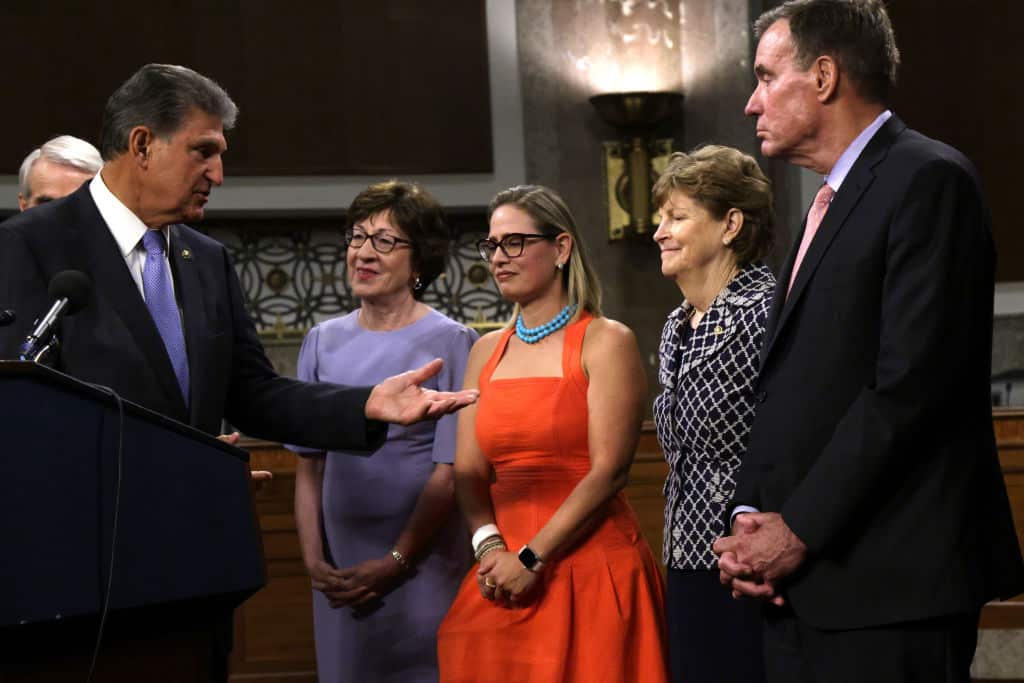President Biden’s signature legislation risks sinking under one of Washington D.C.’s perennial debates: to tax or borrow? Much like the regular fights on the debt ceiling, or continuing the presidency’s near total war powers, the outcome of this debate is almost a certainty. The debt ceiling will always be raised, the president will retain enormous war-making authority, and borrowing will be preferred over raising taxes.
In the case of President Biden’s massive infrastructure package, two Democratic Senators, Joe Manchin from West Virginia and Kyrsten Sinema from Arizona, have been persistent in their opposition to raising taxes to pay for Biden’s proposals.
Senator Sinema has been extremely tight-lipped to the press on where she stands, but Senator Manchin has taken many public positions on the legislation, some contradictory, that has left voters, the press, and the President unsure about where he stands.
Over the past ten months, Manchin has called for up to $4 trillion in infrastructure spending, but he also said that $3.5 trillion is too much, according to a recent New York Times piece. Manchin said he supports ending former President Trump’s 2017 tax cuts, but he also opposes Biden’s suggestion to raise the corporate income tax to 28% despite that being far below the 39% top rate prior to Trump’s tax cuts.
To be fair to Manchin, his seesawing over tax rates and how much should be spent reflects a country that can’t decide on how to pay for the things it wants.
Many Democrats support raising taxes, but enough Democrats oppose such increases that they end up having to rely on deficit spending. Republicans have resolutely opposed tax increases since New Gingrich’s “Contract with America” in the 1994 midterms carried the party to Congressional control for the first time in a generation. But with that policy promise, Republicans too have been forced to use deficit financing to pay for their initiatives.
Whether it’s to pay for protracted wars or healthcare and infrastructure, deficit spending has become the tool of choice for Congress.
Failing to address chronic deficit spending means larger interest payments on the debt; it also reduces the government’s to address major crises in the future. The United States went deep into debt to pay for World War II, but it was able to pay back most of it responsibly over time when the crisis ended and government revenue swelled in the postwar boom years. The U.S. now has its highest debt in relation to the Gross Domestic Product since WWII because deficit spending has become the norm.
Both parties have the chance to go outside their standard ideological boxes, without sacrificing principle, to solve the deficit puzzle by striking the right balance in generating revenue and controlling spending. The massive infrastructure program still being haggled over in Congress will likely be finalized, and stand as another opportunity missed.

